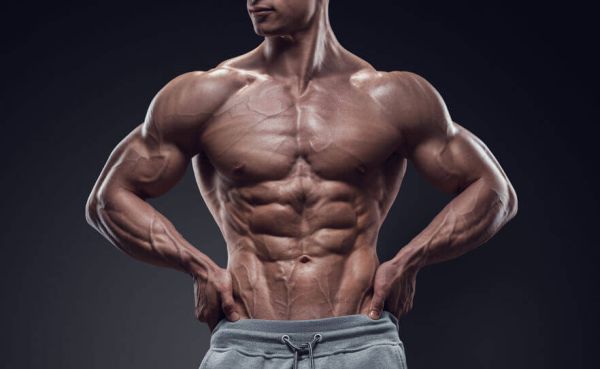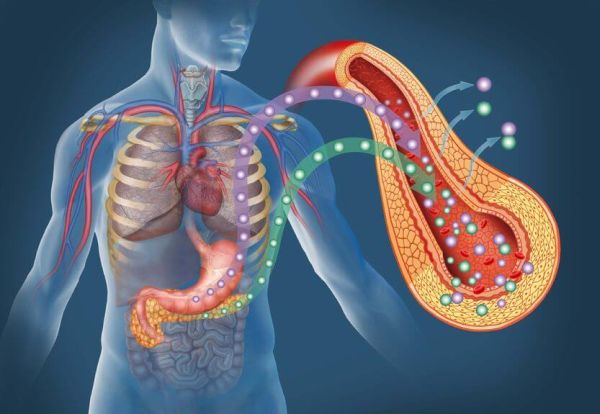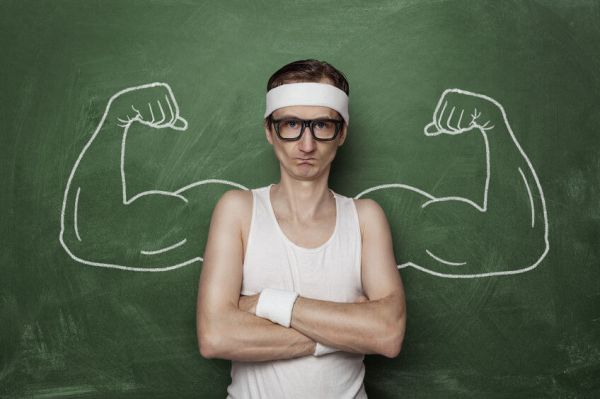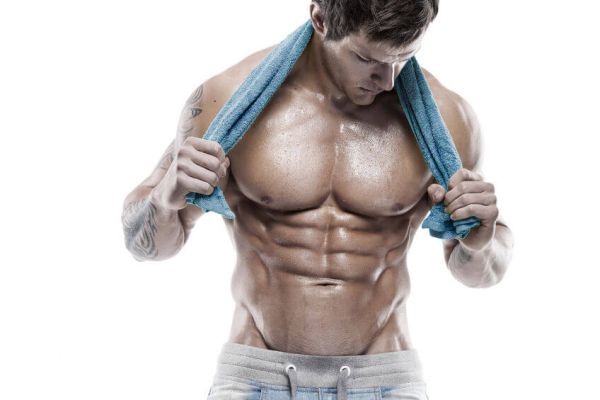Many guys fear the treadmill, believing it has a mystical ability to shrivel up muscle and sap strength. And many bodybuilder types bash cardio simply because they don’t like doing it.
While it’s clearly evident that excessive cardio causes muscle loss (just look at any marathon runner), what about moderate cardio? Will it interfere with your muscle growth? Or will it help?
Well, it can go both ways, actually.
- 3 Ways Cardio Can Help With Muscle Growth
- 2 Ways Cardio Can Get in the Way of Muscle Growth
- So, Cardio While Focusing on Muscle Growth—Yes or No?
- What are your thoughts on cardio and muscle growth? Has including or excluding cardio worked best for you? Let me know in the comments below!
Table of Contents
3 Ways Cardio Can Help With Muscle Growth

There are 3 primary ways that cardio can help you build (and retain) more muscle. They are as follows:
- It improves muscle recovery.
- It improves your body’s metabolic responses to food.
- It keeps up your conditioning, making the transition from “bulking” to “cutting” easier on your body.
Let’s look at these in more detail.
Cardio and Muscle Recovery
As you know, intense exercise causes damage to muscle fibers, which must then be repaired. This damage is the cause of the soreness that you feel the day or two following a workout, and is known as delayed onset muscle soreness, or DOMS.
The reparation of the damage is a complex process that is partly regulated by two simple factors: how much of the substances needed for repair are brought to the damaged muscle over time, and the speed at which waste products are removed.
Thus, cardio can help your body repair muscle damage quicker because it increases blood flow. This helps your body build the muscle back up quicker and remove the waste, which results in an all-around quicker recovery. This is why I always do a cardio session on legs day–it dramatically reduces leg soreness in the days to follow.
It’s worth noting, however, that these benefits are primarily seen in the legs because most forms of cardio don’t really involve the upper body. If you want to boost whole-body recovery, then you would need to do something that gets your upper body working, like a rowing machine, or even using your arms to help pump on the elliptical.


Cardio and How Your Body Metabolizes Food

In our collective dietary fantasy, all nutrients eaten would be sucked into the muscles and either absorbed or burned off, and none would result in fat storage. And when we dieted to lose weight, all energy needs would be met by burning fat, not muscle.
The reality, however, is that our bodies do these things to varying degrees. Some people’s bodies store less fat when they overeat (they burn off more excess calories instead of storing them), and lose less muscle when they diet for weight loss (more energy is sucked from fat than muscle to make up for the caloric deficit). Other people, on the other hand, are more likely to store excess calories and lose muscle when they restrict calories for weight loss.
Hormones like testosterone and cortisol play major roles in this (higher levels of testosterone promote more muscle and less fat, whereas higher levels of cortisol promote less muscle and more fat), but unfortunately there isn’t much we can do about either beyond injecting ourselves with drugs. Our genetics have basically set our normal physiological hormonal ranges and that’s that.
All is not lost if you’re not of the genetic elite, however. Another factor in what your body does with the food you eat is insulin sensitivity (how well your cells respond to insulin’s signals). As discussed in my advice for “hardgainers,” being insulin sensitive is highly beneficial when you’re eating a surplus of calories to build muscle, whereas insulin resistance inhibits muscle growth and promotes fat storage under these dietary conditions.
Now, genetics do affect natural levels of insulin sensitivity as well, but you can do various things to manipulate this mechanism. This is where cardio comes in, because it improves insulin sensitivity, and does so in a dose-dependent manner (meaning the more you do, the more benefits you get).
So, cardio can help your muscles better absorb the nutrients you eat, leaving less available for fat storage.
Cardio and Conditioning

A common issue in the bodybuilding world is the dramatic reduction in cardiovascular fitness when focusing only on heavy weightlifting for months on end.
Building one’s cardio conditioning back up is not only uncomfortable, but going from doing absolutely no cardio to several sessions per week, on top of a caloric deficit (as cardio is added back in for weight loss purposes), puts a lot of stress on the body. This added stress makes weight loss physically and psychologically tougher, and can even accelerate muscle loss.
By keeping regular cardio in during your bulking phases, however, you can maintain your metabolic conditioning and prevent the “shell shock” that many people experience during the beginning of a cut.
It’s also common for people that have bulked for months without cardio to experience an initial lag in weight loss. Those that keep their cardio in seem to better retain the ability to oxidize fat.
2 Ways Cardio Can Get in the Way of Muscle Growth

As I said earlier, cardio can both hurt and help muscle growth. The two primary ways it can negatively affect your gains are by reducing your caloric surplus too much, and by causing you to overtrain.
The surplus issue is pretty moot, however. Normal cardio sessions don’t burn that many calories (a few hundred at most), which is easy enough to correct. But if long, intense sessions are done, that could cause caloric issues.
“Hardgainers” might have something to worry about in this regard as they usually have trouble eating enough as it is. Research has shown that low-intensity cardio stimulates the appetite, however, so including some every week can actually help with eating enough.
Issues relating to cardio and overtraining revolve around intensity and frequency. Simply put, the more cardio you do, and the more intense it is, the more your strength and growth will be negatively affected due to excessive stresses put on both the central nervous system and muscles being worked (usually the legs get it the worst).
So, Cardio While Focusing on Muscle Growth—Yes or No?

I think the positives of including cardio when you’re bulking clearly outweigh the negatives, especially considering the fact that the negatives are easily dealt with.
Here’s what I recommend you do:
- At least two low- to moderate-intensity cardio workouts per week of 20-to-40 minutes each.
- One HIIT workout per week if you enjoy it.
- No more than 2-to-3 hours of cardio per week.
- Cardio and weightlifting on separate days. If that isn’t possible, lift weights first and try to separate the two workouts by at least 6 hours.
Although you’ll often hear fitness gurus tout HIIT as the most effective kind of cardio for fat loss, this isn’t true. Moderate-intensity, steady-state cardio is just as good at fat-burning, easier to recover from, and doesn’t sap your motivation or energy as much as HIIT, which is why I recommend you do it for the majority of your cardio workouts.
What are your thoughts on cardio and muscle growth? Has including or excluding cardio worked best for you? Let me know in the comments below!
+ Scientific References
- Wilson JM, Marin PJ, Rhea MR, Wilson SMC, Loenneke JP, Anderson JC. Concurrent training: a meta-analysis examining interference of aerobic and resistance exercises. J strength Cond Res. 2012;26(8):2293-2307. doi:10.1519/JSC.0b013e31823a3e2d
- Mougios V, Kazaki M, Christoulas K, Ziogas G, Petridou A. Does the intensity of an exercise programme modulate body composition changes? Int J Sports Med. 2006;27(3):178-181. doi:10.1055/s-2005-865625
- Wilson JM, Marin PJ, Rhea MR, Wilson SMC, Loenneke JP, Anderson JC. Concurrent training: a meta-analysis examining interference of aerobic and resistance exercises. J strength Cond Res. 2012;26(8):2293-2307. doi:10.1519/JSC.0b013e31823a3e2d
- Erdmann J, Tahbaz R, Lippl F, Wagenpfeil S, Schusdziarra V. Plasma ghrelin levels during exercise - effects of intensity and duration. Regul Pept. 2007;143(1-3):127-135. doi:10.1016/j.regpep.2007.05.002
- Melanson EL, MacLean PS, Hill JO. Exercise improves fat metabolism in muscle but does not increase 24-h fat oxidation. Exerc Sport Sci Rev. 2009;37(2):93-101. doi:10.1097/JES.0b013e31819c2f0b
- Brillon DJ, Zheng B, Campbell RG, Matthews DE. Effect of cortisol on energy expenditure and amino acid metabolism in humans. Am J Physiol Metab. 1995;268(3):E501-E513. doi:10.1152/ajpendo.1995.268.3.E501
- Dubé JJ, Allison KF, Rousson V, Goodpaster BH, Amati F. Exercise dose and insulin sensitivity: relevance for diabetes prevention. Med Sci Sports Exerc. 2012;44(5):793-799. doi:10.1249/MSS.0b013e31823f679f
- Frøsig C, Richter EA. Improved insulin sensitivity after exercise: focus on insulin signaling. Obesity (Silver Spring). 2009;17 Suppl 3:S15-20. doi:10.1038/oby.2009.383









